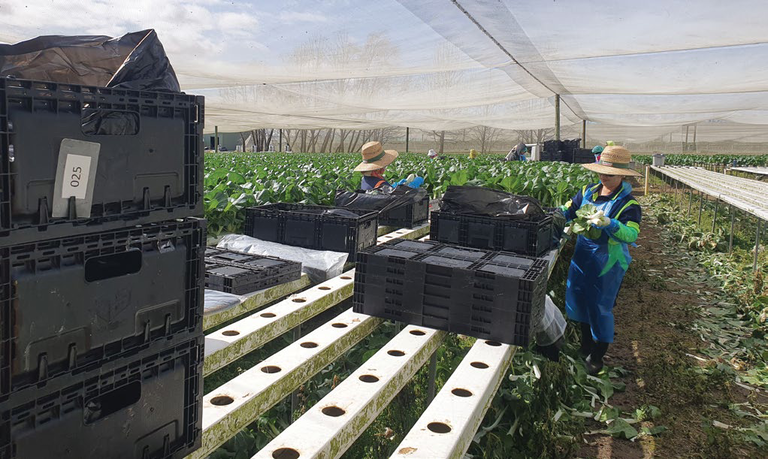International Fresh Produce Safety Symposium IFPSS25
AN OPPORTUNITY TO CONNECT AND LEARN
I have just returned from this year’s produce safety symposium which kicked off with a visit to Barden Farms in Ourimbah, followed by a tour of the NSW DPIRD laboratories with SP Singh. Barden Farms is an impressive hydroponic operation, where we discussed the challenges of managing wildlife, specifically ducks, and training temporary workers. It was obvious Steve places a high priority on encouraging workers to do the right things for food safety.
Words Dr Elizabeth Frankish, Food safety consultant, Food Minds
THE symposium was packed with energy, a focus on collaboration, and optimism for a safe, sustainable horticulture industry. The theme ‘Innovate Adapt Secure’ was well served by a line-up of excellent speakers. Keynote speaker Dr Jim Monaghan of Harper Adams University in Shropshire was on message, advising industry to deal with risk before the regulators ‘come to you’ , a timely message as growers prepare for PPP risk assessments by Environmental Health Officers. Throughout the two days of presentations, the issues highlighted for safety assurance were: • Understanding and conducting field risk assessments
• Managing irrigation water quality • Preparing for and managing extreme weather events • Product and water testing • Safety crisis management • Embracing the use of data
We heard tips on risk communication when a crisis occurs and the challenges that befell the regulators in the recent E. coli 0157 recall in eastern Australia. Stakeholder communications need improvement, as often growers had multiple entities to deal with, causing frustration. We heard from Freshcare that ‘certification is your tool to better risk management’ and thus better business. CEO Jane Siebum says growers should think of their certificate as a business asset. Discussion on AI introduced the possibilities for improving food safety through enhanced traceability and the use of predictive analytics for contamination detection and
As Professor Phil Bremer from University of Otago noted, ‘consumers focus on the hazard, so growers should focus on the risk’.

Fluids
shelf-life predictions. There is a lot to play out here, but progress is likely to speed up. As a participant in the panel discussion on the updated and soon-to-be-released Fresh Produce Food Safety Guidelines , I introduced the new chapters on Managing Critical Incidents and Food Safety Culture . Growers will also find the new Appendices useful, on The Use and Significance of Faecal Indicator Bacteria and Food Safety Management Systems . Overall, the new guidelines have expanded a risk-based approach to managing food safety. Watch out for the launch of the updated Guidelines in September available at
Fingers
Fields
Faeces
Food
Flies
FIGURE 1. The F Diagram — fecal-oral route of disease transmission
Key takeaways
Risk assess your operations to prepare for incidents (see Figure 1). Think about the hazard routes from faeces to fluids, fingers, flies, and fields, which contaminates our food. Use the fresh produce safety guidelines to improve food safety management.
More information If you’d like to discuss risk and crisis management: • Email joel.dinsdale@vegetableswa. com.au • Or